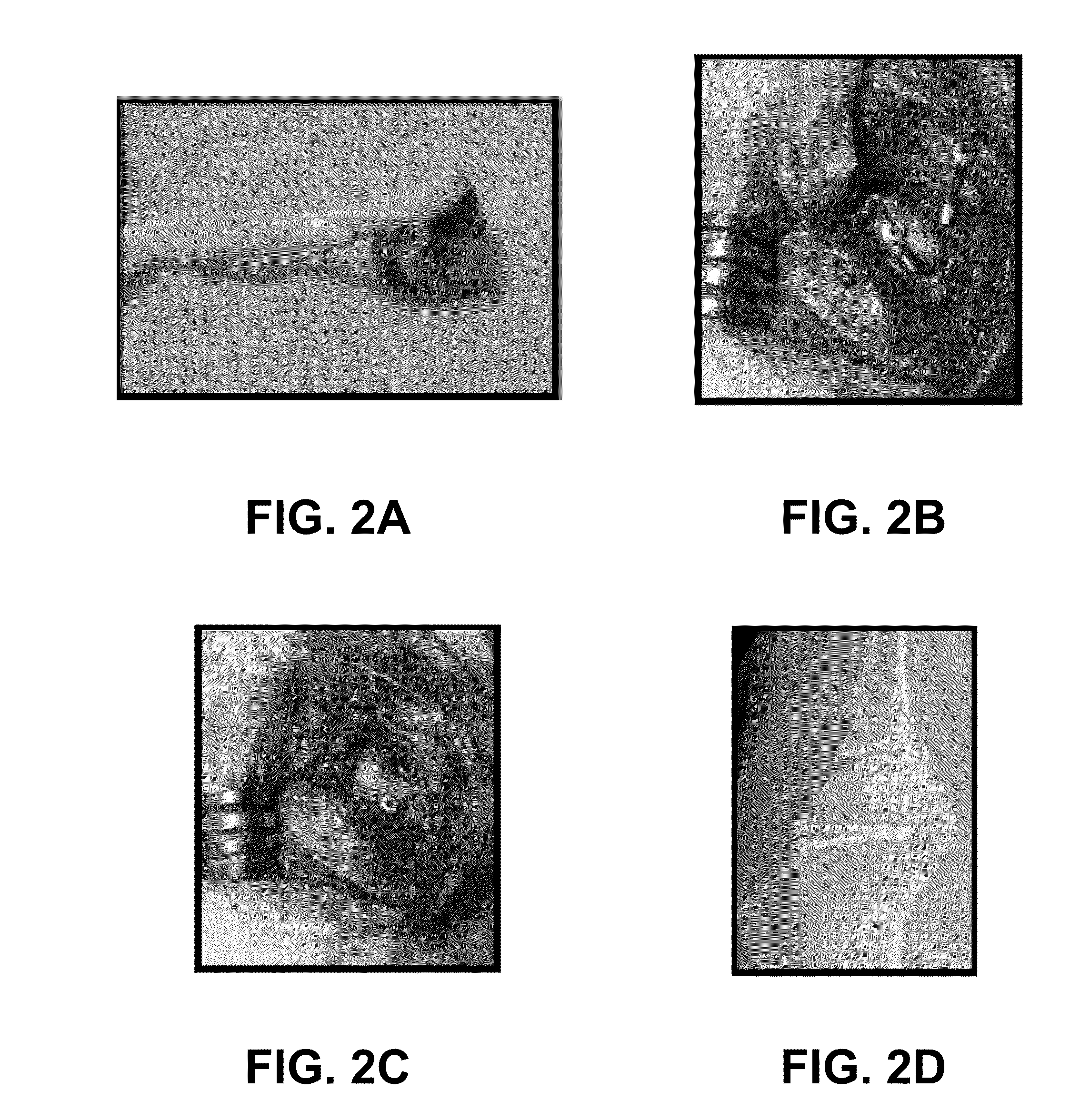Rotator cuff bone-tendon allograft
a rotator cuff and allograft technology, applied in the field of biomaterials, can solve the problems of limited arm movement, “wear and tear” of rotator cuff, and many patients, especially with full thickness rotator cuff tears, still suffer disability and pain, and achieve the effect of accelerating the recovery process
- Summary
- Abstract
- Description
- Claims
- Application Information
AI Technical Summary
Benefits of technology
Problems solved by technology
Method used
Image
Examples
example 1
Efficacy of Alloqraft Repair of Rotator Cuff in a Canine Shoulder Model
[0052]To assess the efficacy of using an embodiment of the biomaterial in a bone-tendon allograft technique for rotator cuff repair, the following experiments were conducted. Four adult purpose-bred mongrel dogs underwent surgical rotator cuff repair using the bone-tendon allograft technique and other techniques as described below. In particular, the bone-tendon allograft technique was compared to an existing tendon-only allograft technique to evaluate the clinical efficacy for the bone-tendon allograft technique for repair of the rotator cuff in a canine model. All dogs underwent bilateral infraspinatus tendon (IST) partial tenectomies, except as noted below. The defect introduced by the partial tenectomy was then repaired by either the bone-tendon (B-T) allograft technique (n=3), or by a tendon-only allograft (n=3). All procedures were approved by the institutional ACUC.
[0053]All allografts were obtained from c...
PUM
 Login to View More
Login to View More Abstract
Description
Claims
Application Information
 Login to View More
Login to View More - R&D
- Intellectual Property
- Life Sciences
- Materials
- Tech Scout
- Unparalleled Data Quality
- Higher Quality Content
- 60% Fewer Hallucinations
Browse by: Latest US Patents, China's latest patents, Technical Efficacy Thesaurus, Application Domain, Technology Topic, Popular Technical Reports.
© 2025 PatSnap. All rights reserved.Legal|Privacy policy|Modern Slavery Act Transparency Statement|Sitemap|About US| Contact US: help@patsnap.com



